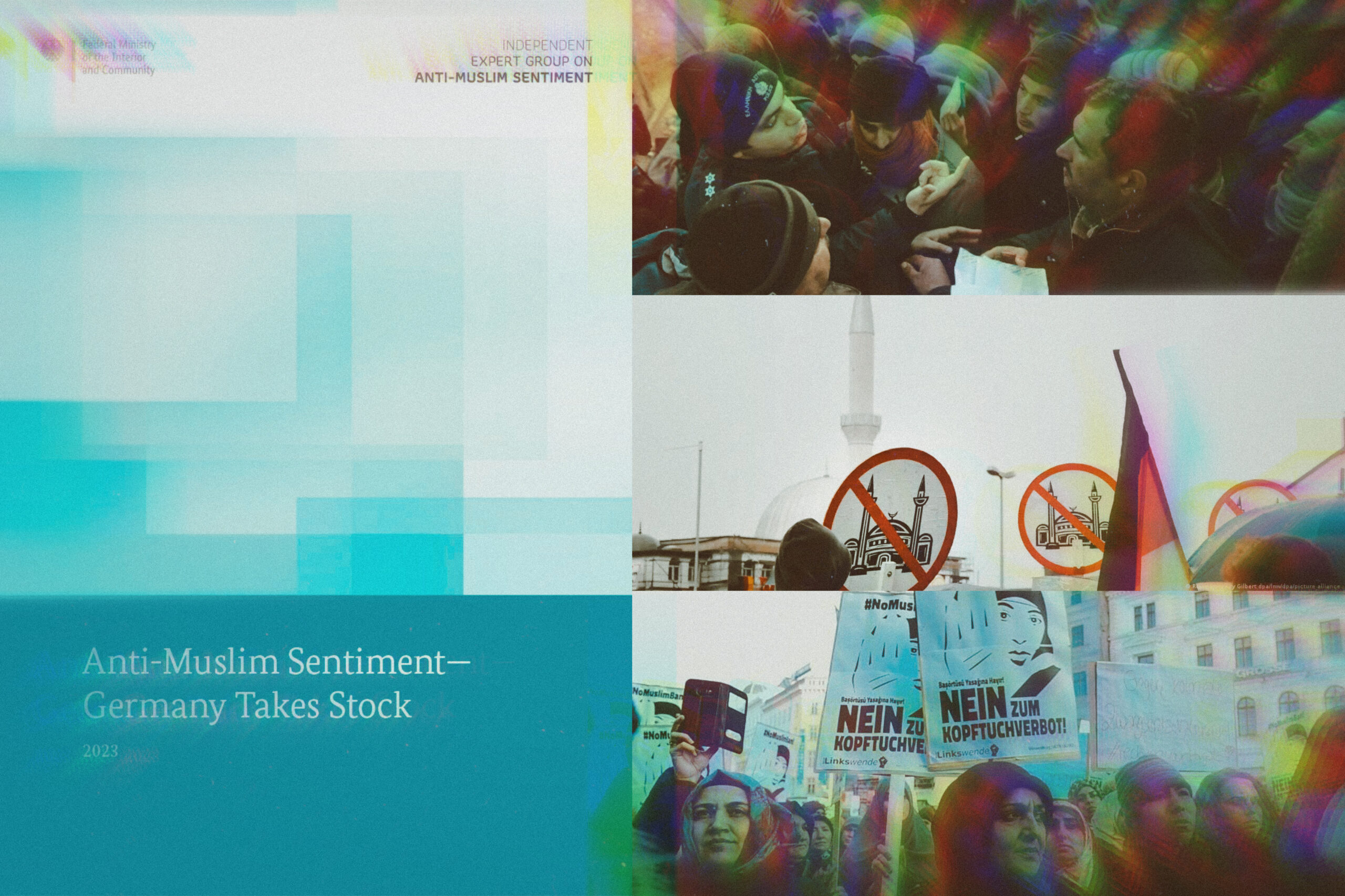Germany, like many locales, is currently undergoing processes of societal boundary drawing giving renewed salience to religious difference. The aftermath of President Trump’s decision to recognise Jerusalem as the Israeli capital brought fierce debates about the (real or imputed) anti-Semitism of Muslim immigrants and their descendants. The result was a further instance of the discursive othering of Arabs and Muslims in a Germany supposedly marked by a uniquely Judeo-Christian ‘leading culture’.
Concomitantly, more and more Christian Germans – in spite of their falling levels of religious observance – wish to re-emphasise the Christian identity of their country, while considering Islam to be an alien and subversive force.
Trans-religious scientific networks
Against this backdrop of growing ethnoreligious exclusivism, two exhibitions currently on show in Berlin seek to draw a more nuanced picture of the conflicts as well as the connections between the three Abrahamic faiths.
At the Martin-Gropius-Bau, the exhibition “Jews, Christians and Muslims: Scientific Discourse in the Middle Ages 500-1500” is taking a historical perspective. Through a wide array of documents, manuscripts, textbooks and other objects of scientific production in the fields of medicine, astronomy and astrology, the exhibition seeks to render visible the myriad interconnections and interdependencies between scientists across religious divides.
Drawing on the heritage of pagan antiquity, scientific knowledge and practices were passed on during the Middle Ages via circuitous routes that transcended geographic, linguistic, and religious boundaries. Writing for the Qantara magazine, Gustav Seibt notes that this effectively refutes the chimera of a (self-contained) Judeo-Christian Europe.1
“Welcome to Jerusalem”
Roughly one kilometre to the south-east, the city’s renowned Jewish Museum is currently showing “Welcome to Jerusalem” – a themed exhibition proposing to take the visitor through two millennia of the city’s history.
Interspersing objects from the everyday lives of the city’s inhabitants with maps, a video documentary, and with artworks both ancient and contemporary, the curators seek to show the diversity of Jerusalem. The holy sites of Christians, Jews, and Muslims lie at the heart of the project.2
A “House of One”
These two exhibitions form part of a growing wave of civil society activism in the German capital that aims to foster inter-religious dialogue. The perhaps most ambitious project is the planned House of One, a forum of prayer and learning initiated jointly by Christian, Jewish, and Muslim spiritual leaders.
In October 2017, the city administration agreed to allocate an empty plot in central Berlin to the House. Construction at the Petri Square, on top of the foundations of the church of Saint Peter, destroyed by bombardment during World War Two, is set to start in 2019. Financing remains, however, an issue.3
Educational projects
At the same time, a Jewish educational charity, a Muslim association mainly run by converts and the Evangelical-Lutheran regional church are seeking to create a Three-Religion-Nursery (Drei-Religionen-Kita) – a confessional kindergarten to be attended by 45 Christian, 45 Jewish, and 45 Muslim children.4
Finally, the Humboldt University of Berlin is planning to open its department of Islamic theology by autumn 2018. This would make the university the sixth institution of tertiary education in Germany to offer an Islamic theology curriculum. There are further plans for a ‘Campus of Theologies’ bringing together Muslim and Christian students for joint seminars and projects.5
All of these initiatives are in their own ways seeking to enhance dialogue between the different religious traditions and communities. The extent to which they will be able to withstand an increasingly polarised political environment remains to be seen.
Sources
http://en.qantara.de/content/exhibition-jews-christians-and-muslims-in-berlin-dispelling-myths ↩
http://www.spiegel.de/kultur/gesellschaft/jerusalem-ausstellung-im-juedischen-museum-berlin-wem-gehoert-die-stadt-a-1182692.html ↩
https://www.berliner-zeitung.de/berlin/house-of-one-berlin-vergibt-grundstueck-fuer-interreligioeses-projekt-28784094 ↩
https://www.berliner-zeitung.de/berlin/house-of-one-berlin-vergibt-grundstueck-fuer-interreligioeses-projekt-28784094 ↩
https://www.berliner-zeitung.de/berlin/house-of-one-berlin-vergibt-grundstueck-fuer-interreligioeses-projekt-28784094 ↩






